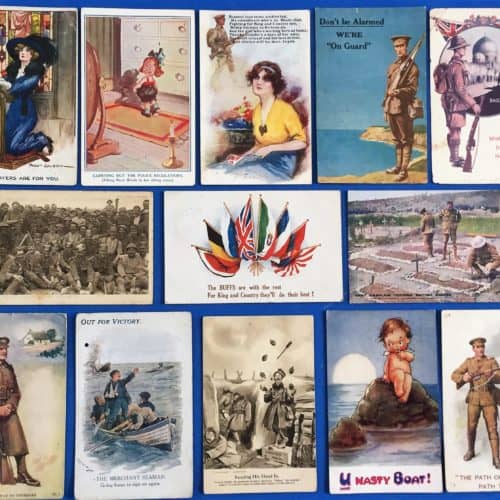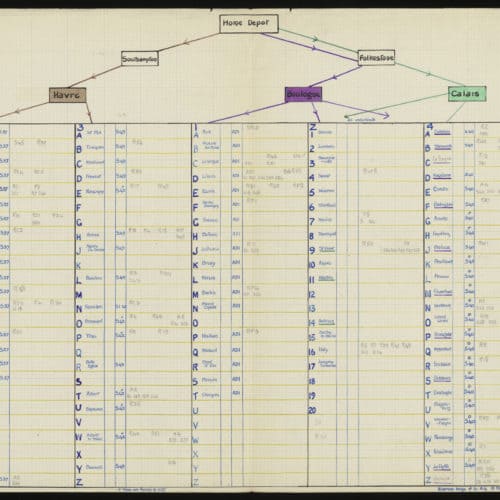WW1 activity 11: a postcard to Blighty
Investigate the designs and messages on WW1 postcards. What can they tell us about the war? Design your own WW1 postcard.
Then write a message to loved ones back home in Blighty without annoying the Censor! Or to a soldier telling them all about life on the Home Front in Folkestone.
If you are feeling ambitious you can even re-create an army post office in the classroom, distributing mail from London to the Western Front and back via Folkestone! With a censor to check and remove any sensitive information.
Learning objectives
Increased knowledge and understanding of how people communicated in WW1.
Understanding and interpreting historic sources
Increased confidence in reading and writing.
Curriculum links
KS1-4 History (WW1)
KS1-2 Art and Design (design a WW1 postcard)
Ask the class to research the Army Postal Services in WW1 and report back on how it got millions of postcards, letters and parcels to troops on the Western Front and in other theatres of war around the world.
- Who did most of this work?
- How did they get there?
- What important role did Folkestone play?
Look at this great website: https://www.postalmuseum.org/discover/collections/ww1/
See the Western Front section to discover Folkestone’s involvement.
The children could even set up their own WW1 Army Postal Services post office in the classroom to sort and deliver postcards and food parcels to the troops. Mail could be addressed to soldiers in different regiments, stationed in different sectors of the Western Front, and sorted for distribution in mail bags from either Folkestone or Southampton, depending on where the soldiers were fighting (using the chart below).
Mail was sorted separately for the two Folkestone cross-channel routes (Folkestone to Boulogne and Folkestone to Calais) to go to different parts of the Western Front. So children would need three separately marked mail bags to sort into:
Western Front (Mail via Southampton to Le Havre)
Western Front (Mail via Folkestone to Boulogne)
Western Front (Mail via Folkestone to Calais)
Different groups of soldiers could wait for their mail in different parts of the school (or corners of the classroom). And then send their postcards back to family via the same route.
A Censor could check the soldiers’ mail for any mention of their location on the Western Front, army numbers or movements, times of attack, or anything else that might help the enemy should it fall into the wrong hands.
Create and write a WW1 postcard
There are several examples of WW1 postcards and postcard messages in Learn with Objects WW1 17: postcards which can be shown on the whiteboard for inspiration. Or children can research them on other museum websites.
Top tip. Guillotine A4 sheets of stiff white card into four A6 postcard size pieces. 10 sheets of A4 will make 40 postcards, enough for a class.
Learn with Objects links
Use Learn with Objects WW1 17: postcards for info and images.


